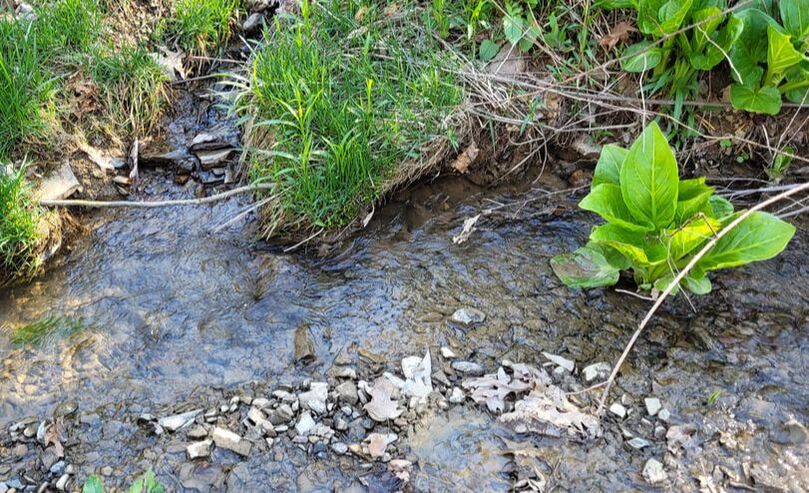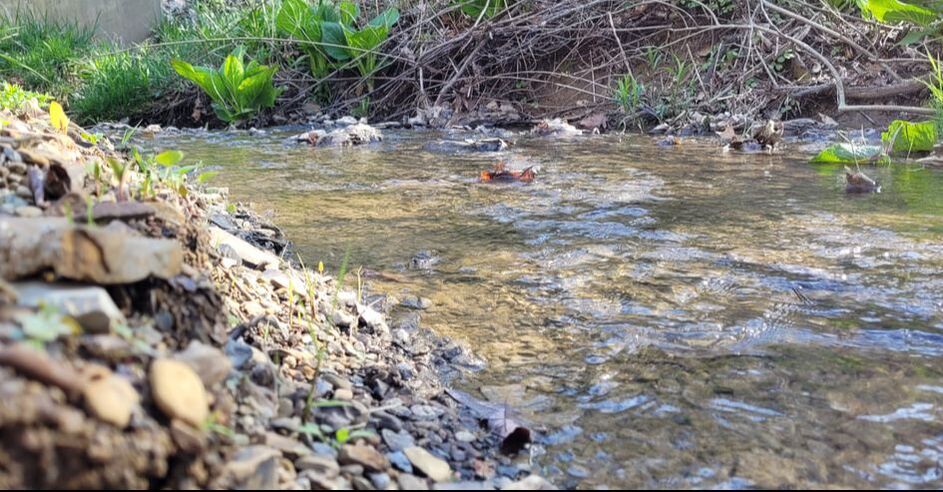Public encourged to be mindful of water draws on smaller streams, reach out with concerns, questions5/1/2022 A tiny waterway – more a trickle than a stream – winds down through an under-road culvert at the intersection for a small Snyder County community. A few scattered populations of minnows and macroinvertebrates share the tiny channel un-interrupted until a hose is lowered into the stream from a roadside truck and water is drawn into an approximately 700-gallon tank to be used for a nearby hydroseeding project. The truck returned for several additional water draws from the same stream later that day.
The Department of Environmental Protection (DEP) has its own set of thresholds, under Chapter 110, that would trigger the need for registering and reporting a water draw, according to the agency’s Acting Environmental Group Manager, James Horton. These include:
“With regard to allocation permits, they would only take effect in the event that a Public Water Supplier intends to serve surface water to its customers for consumption,” said Horton via an email exchange. “In that instance, they would need to reach out to their regional office to discuss and obtain the appropriate permits from the Safe Drinking Water program to withdraw." Hoffman suggested that the SRBC is mindful of the potential cumulative effect of different water draws from different users, which weighs heavily upon decisions to issue approvals to a variety of projects within the watershed. “That overall impact – their water draw plus any upstream users – goes into determining if there is any sort of potential environmental impact along with considering any water availability issues within a certain region,” he said. Obviously, this can be difficult to track when companies draw water in amounts that fall below regulatory thresholds, but Hoffman added that his agency is a huge advocate of individually investigating reports they receive. “When considering a complaint on face value of something that wouldn’t normally trigger things based on regulatory thresholds, we make it a point to send somebody out to all of these complaints, just to get eyes on it and make sure that we have as much information as possible,” he said. While a company may be withdrawing water less than a regulatory threshold for either the SRBC or DEP, if that water draw is visibly impacting the stream’s flow, it definitely needs to be reported, according to Hoffman. “If it is a case of a very small stream – like a headwater-type setup – and they are taking all or a majority of the flow, and essentially drying up the stream, that would obviously be a concern,” Hoffman said. “We need to hear about something like that right away.” Between the black-and-white boundaries of the regulatory thresholds and acts that visibly restrict or dry up a small stream, however, there is quite a bit of gray. For example, what if Company A withdraws X-thousand gallons from a stream in the morning, Company B pulls Y-thousand more in the afternoon and Company C takes Z-thousand additional gallons in the evening – all on the same day? While X, Y and Z may each be below the daily threshold, together they could pose a concern. Which is why people across the greater watershed are encouraged to be alert in their local communities, not be afraid to ask questions and, if they notice something that seems concerning, don’t hesitate to report it. “We don’t want to discourage people from bringing this information forward,” said Hoffman. “I like hearing about it regardless if it is a clear-cut violation or not because I want to make sure we are responsive to the public and ensuring that it is not something that needs our approval because what they see in their first-hand account may be different than what one of my folks may see when they go out and do a follow-up inspection. If the outcome is: ‘Hey, we looked at it and nothing is required,’ then that’s just as well. “Certainly, don’t hesitate to pass anything along to me or get in touch with any questions. We don’t mind at all having those conversations and providing information.” You can contact Hoffman directly via email at [email protected]. If you need help in making the connection, contact Middle Susquehanna Riverkeeper John Zaktansky at [email protected]
2 Comments
3/30/2023 08:06:18 am
Such a nice read. Thanks for sharing this one!
Reply
Leave a Reply. |
AuthorsRiverkeeper John Zaktansky is an award-winning journalist and avid promoter of the outdoors who loves camping, kayaking, fishing and hunting with the family. Archives
July 2024
Topics |



 RSS Feed
RSS Feed